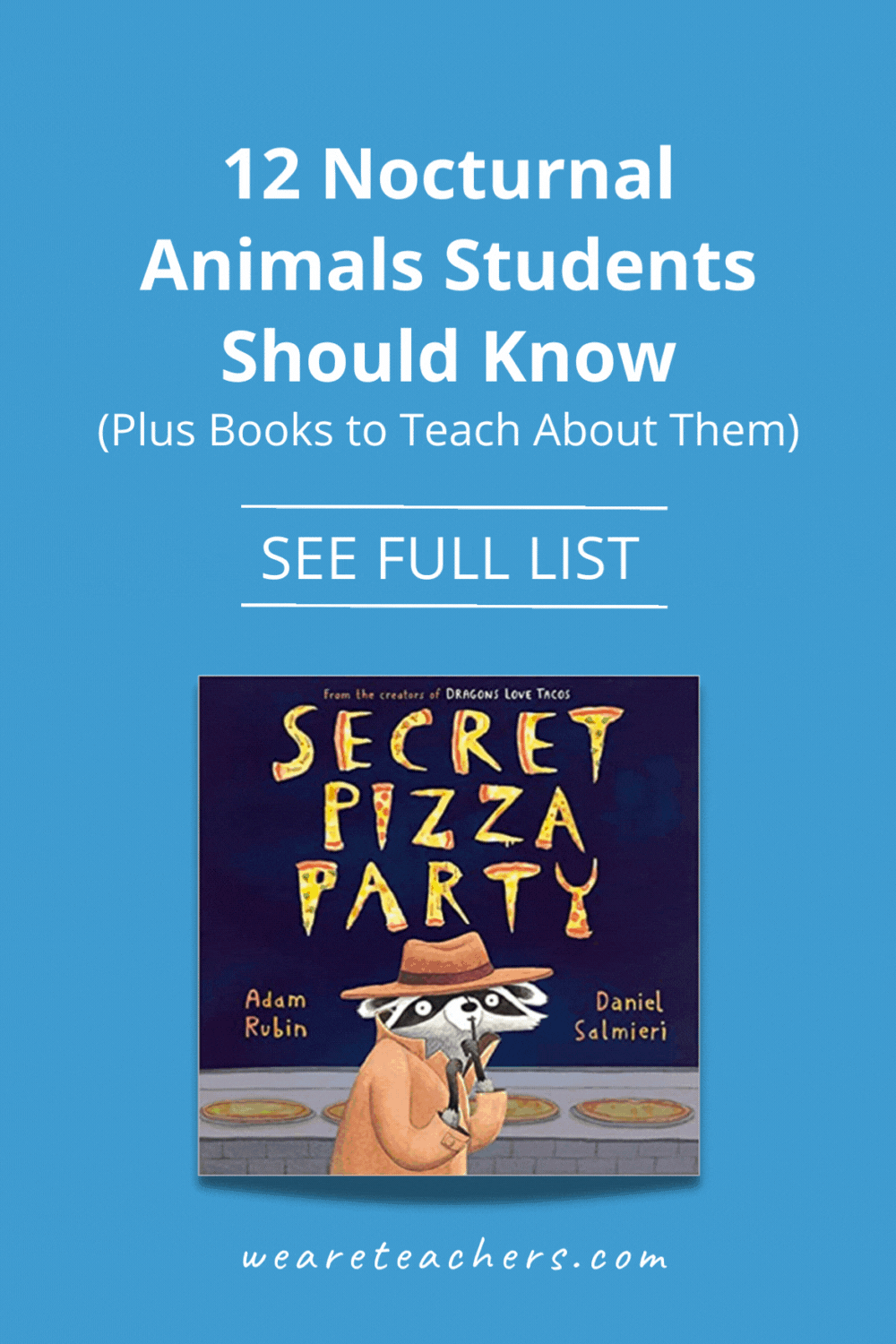What kid doesn’t love the idea of staying awake and snacking all night like nocturnal animals do? Animals that are active during the day and sleep at night are awesome to study when talking about animal adaptations or to focus on during a nonfiction text unit. Not sure how to tell a sugar glider from a raccoon? We’ve pulled together a list of nocturnal animals that includes wow-worthy facts and books you can take straight to your students.
(Just a heads up, WeAreTeachers may collect a share of sales from the links on this page. We only recommend items our team loves!)
Nocturnal Animal Facts and Nonfiction Books
1. Raccoon
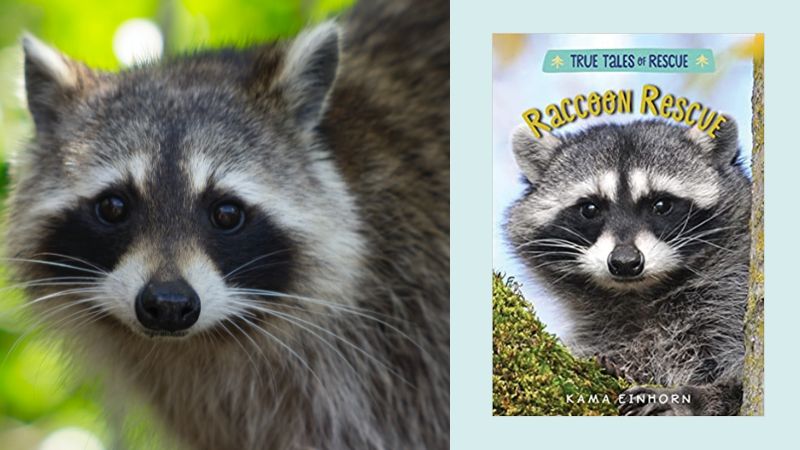
These masked mischief-makers are known for seizing opportunities to eat or explore while their human neighbors are sleeping (or sometimes, during the day). Their omnivorous diet includes fruit, vegetables, small rodents, and fish. Urban raccoons eat garbage, compost, and pet food too. Raccoon tracks are great fun to spot in snow or mud—their five long toes look just like mini-handprints.
Read and learn about raccoons in Raccoon Rescue: True Tales of Rescue by Kama Einhorn.
2. Owl
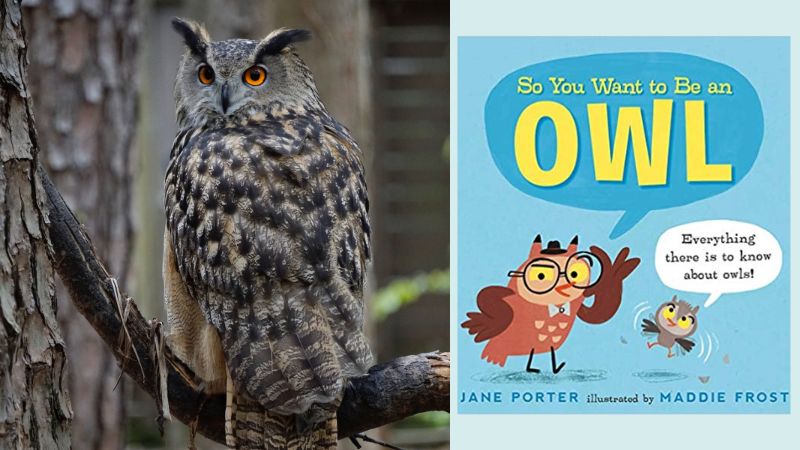
Owls are some of the most majestic creatures on our nocturnal animals list. From the tiny elf owl to the impressive great gray owl, owls’ excellent hearing and near-silent feathers make them the stealthiest nighttime hunters. Their eyes are shaped like binoculars, letting them hone in on prey from far away. Owls swallow their prey whole and cough up the bones and fur in owl pellets; try dissecting them for an amazing hands-on project.
Read and learn about owls in So You Want To Be an Owl by Jane Porter.
3. Sugar Glider
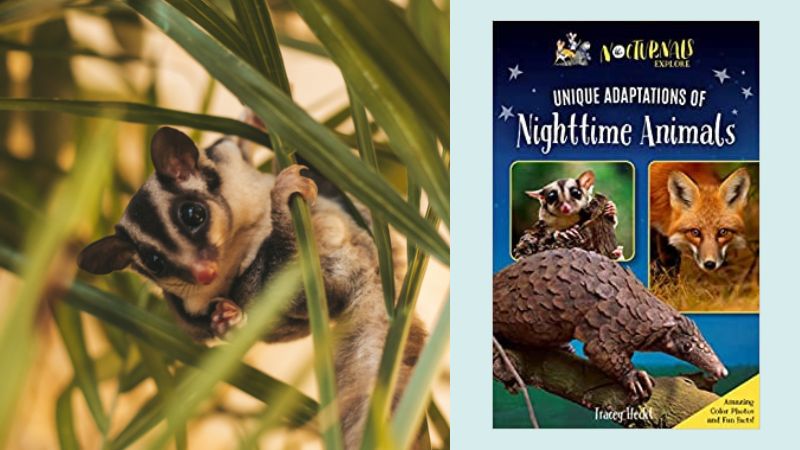
With its candy-coated name and funny habits, sugar gliders are at the top of many kids’ favorite nocturnal animals list. These mini marsupials, native to Australia, can soar through the air up to 165 feet with their parachute-like bodies. They make many different sounds and also use their own signature scents to communicate with one another.
Read and learn about sugar gliders in the “Glide, Sugar Glider!” chapter of The Nocturnals Explore Unique Adaptations of Nighttime Animals by Tracey Hecht.
4. Bat
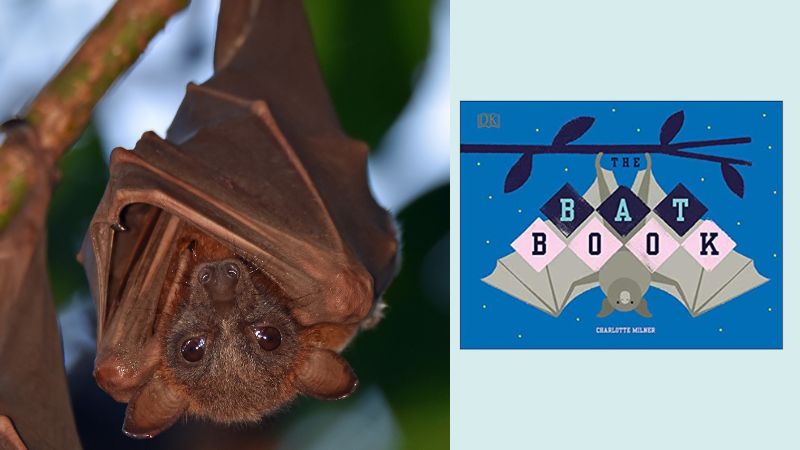
Bats are the world’s only flying mammal, earning them a special spot on our nocturnal animals list. There are over 1,400 bat species, found everywhere except the most severe desert and polar climates. Bats sometimes get a bad rap for being creepy pests, but they are actually essential for plant pollination and pest control in many areas. They can eat thousands of insects in a single night!
Read and learn about bats in The Bat Book by Charlotte Milner.
5. Fox
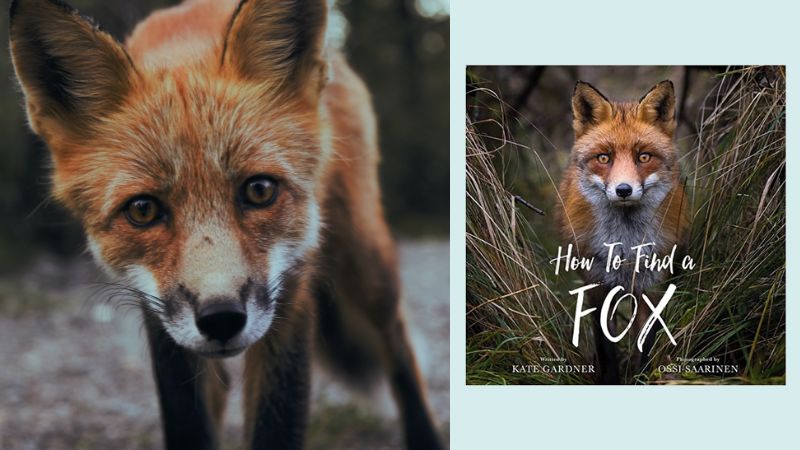
Foxes’ eyes are specially designed to be extra-intense for nighttime hunting. Their super-sensitive ears can even allow them to hear rodents digging under the ground. And how cool is it that they use the earth’s magnetic fields to help them find and catch their prey? Foxes are introverted—they tend to live alone or with a small family group called a “skulk.”
Read and learn about foxes in How To Find a Fox by Kate Gardner.
6. Coyote
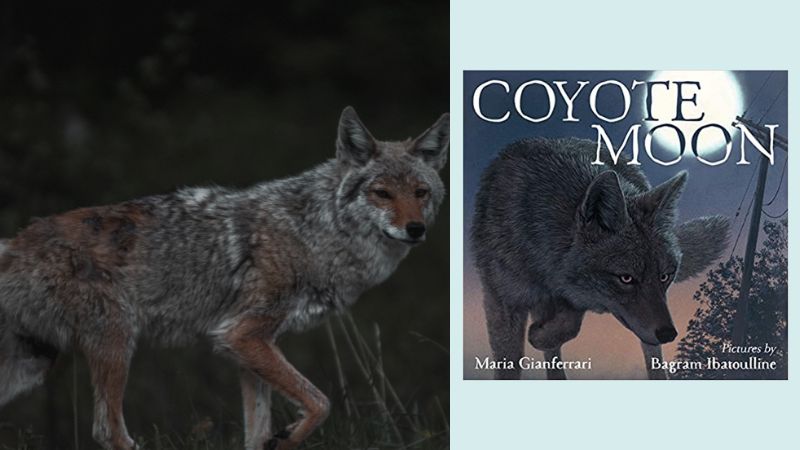
These smart hunters can live in almost any habitat and eat almost anything! Coyotes usually live in a pack of extended family members. Coyote pups learn fast. They are born in spring and learn to hunt on their own by fall. Humans encourage coyotes to be nocturnal. In populated areas, coyotes hunt at night to avoid people, but in uninhabited areas they may be awake during the day.
Read and learn about coyotes in Coyote Moon by Maria Gianferrari and Bagram Ibatoulline.
7. Opossum
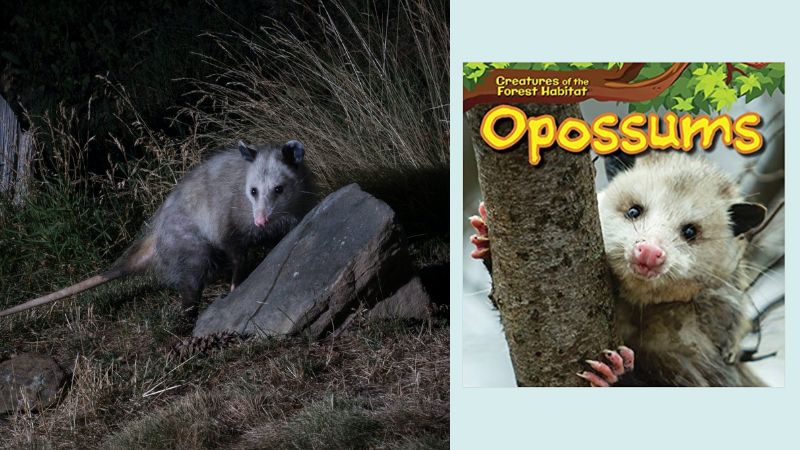
Also called possums, these woodland marsupials have lots of cool skills. Their handy prehensile tails can grip branches to let them hang upside down. They can lie still for hours and slow their breathing to play dead. Possum moms can have as many as 25 babies at once! They ride in Mama’s pouch for two months and then on her back for another month.
Read and learn about opossums in Opossums (Creatures of the Forest Habitat) by Ada Quinlivan.
8. Pangolin
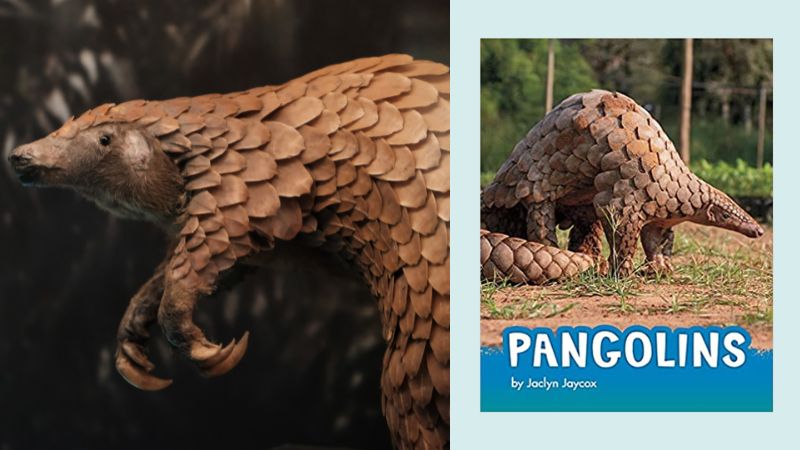
This animal’s name means “roller,” for its ability to roll itself into a scaly ball when threatened. Pangolin scales are made from keratin—just like human fingernails. Pangolins live in Africa and Asia and use their long snouts to suck up over 70 million insects per year! They also use their sensitive noses to find their way around in the dark. They are one of the most trafficked animals in the world—all eight species of pangolins are protected or endangered.
Read and learn more about pangolins in Pangolins by Jaclyn Jaycox.
9. Skunk
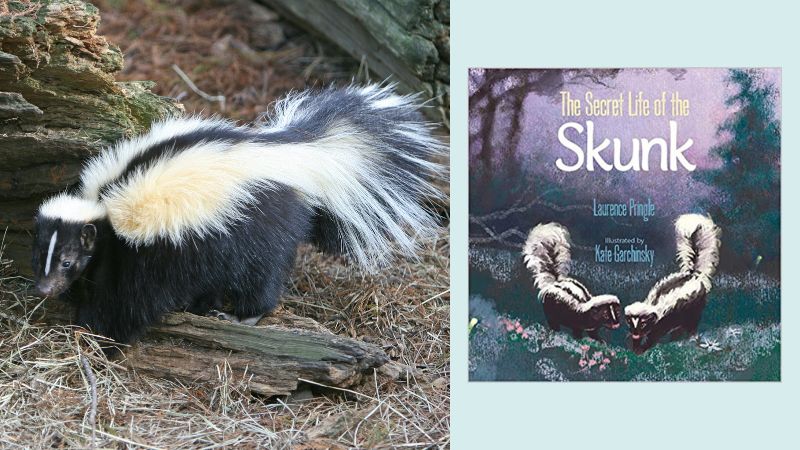
Skunks stay cozy in leaf-lined dens during the day and come out at night to look for fruit, plants, insects, bird eggs, and small rodents to eat. Their stinky spray, called “musk,” can hit a target up to 12 feet away, and the smell can last for four days. Yuck! They do usually give plenty of warning first, though, by growling, stamping, or even doing a handstand.
Read and learn about skunks in The Secret Life of the Skunk by Laurence Pringle.
10. Ocelot
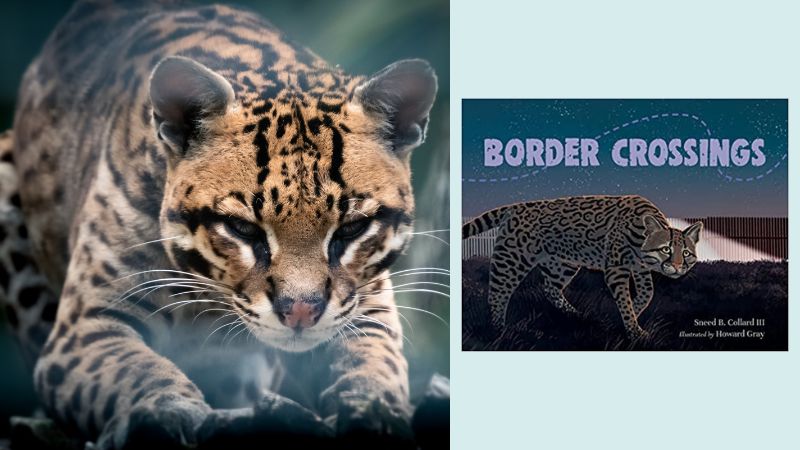
Ocelots use their sharp senses to pounce on their prey at night. Found mostly in Mexico and Central American rain forests, these secretive animals are known for their special spots—every ocelot’s coat is unique!
Read and learn about ocelots in Border Crossings by Sneed B. Collard III.
11. Sloth

Millions of years ago, 20-foot-long giant sloths walked the earth—whoa! Today these slow-movers have evolved to be much smaller. They sleep about 15 hours per day. They wake up at night to snack on leaves, fruit, and sometimes bird eggs or insect larvae. Sloths live in the treetops of Central and South America. They usually eat, sleep, mate, and give birth upside down!
Read and learn about sloths in Destiny Finds Her Way: How a Rescued Baby Sloth Learned to Be Wild by Margarita Engle.
12. Cockroach
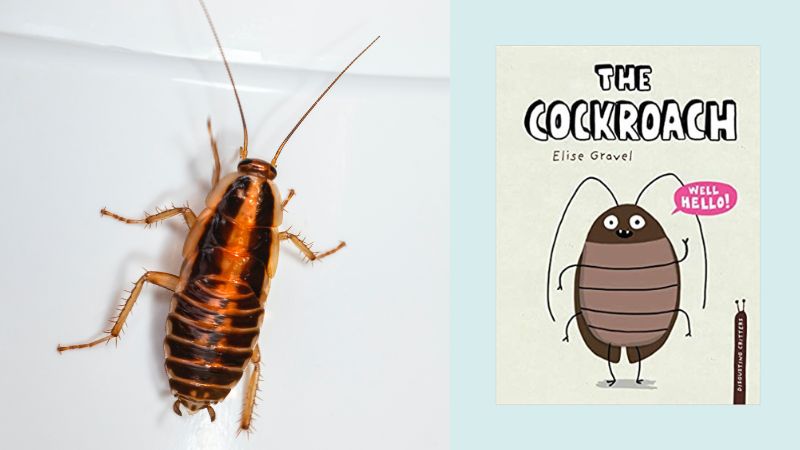
We had to include these on our nocturnal animals list to satisfy those kids who love gross things. (Actually, though, out of 30,000 cockroach species, only a handful are known as human pests.) Cockroaches prefer to stay hidden during the day and look for food at night. They are tough little critters—some species can survive without food for a month and even without air for 45 minutes.
Read and learn about cockroaches in The Cockroach (Disgusting Critters) by Elise Gravel.
Favorite Stories About Nocturnal Animals
Our nocturnal animals list wouldn’t feel complete without including some kid-approved stories to round out your classroom book display. Check out these old and new favorites.
1. Night Animals by Gianna Marino
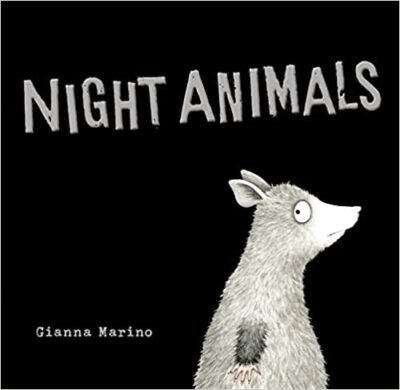
Buy it: Night Animals on Amazon
2. Are You a Cheeseburger? by Monica Arnaldo
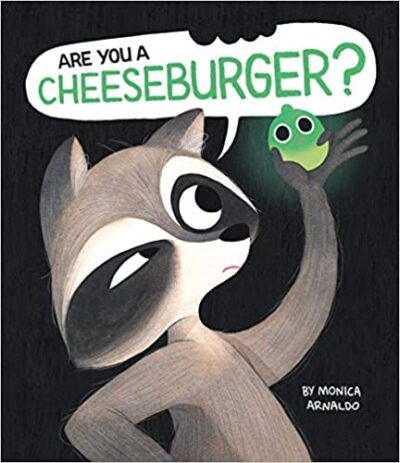
Buy it: Are You a Cheeseburger? on Amazon
3. Secret Pizza Party by Adam Rubin
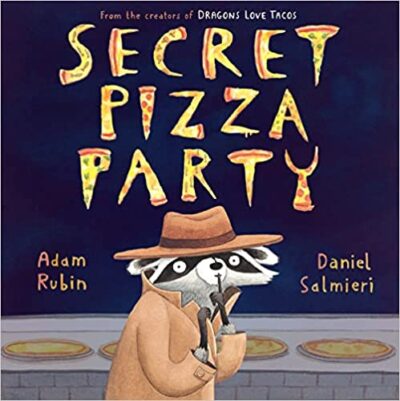
Buy it: Secret Pizza Party on Amazon
4. Owl Moon by Jane Yolen
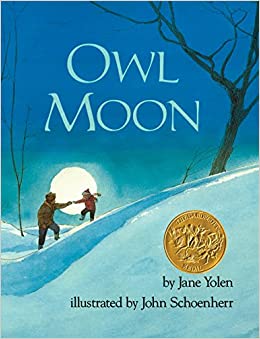
Buy it: Owl Moon on Amazon
5. Little Bat in Night School by Brian Lies
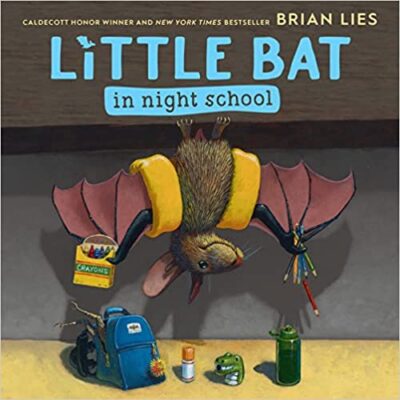
Buy it: Little Bat in Night School on Amazon
6. Appleblossom the Possum by Holly Goldberg Sloan
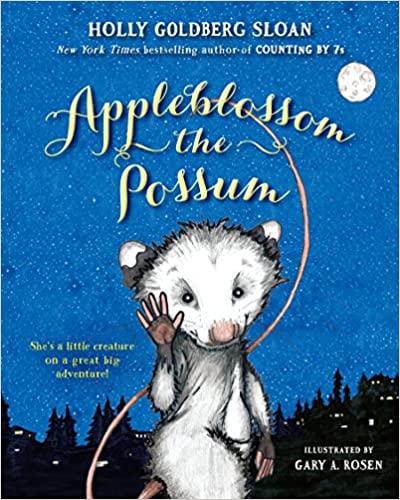
Buy it: Appleblossom the Possum on Amazon
7. If You Wake a Skunk by Carol Doeringer
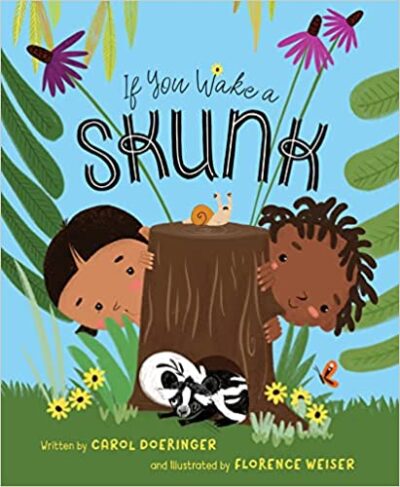
Buy it: If You Wake a Skunk on Amazon
8. The Nocturnals: The Best Burp by Tracey Hecht
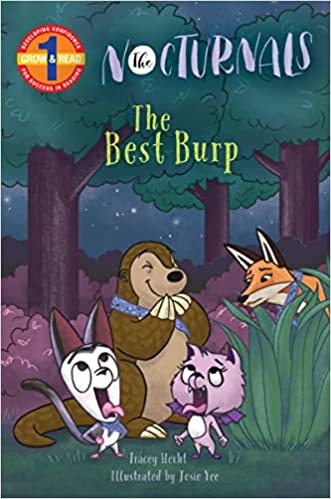
Buy it: The Nocturnals: The Best Burp on Amazon
9. The Nocturnals series by Tracey Hecht
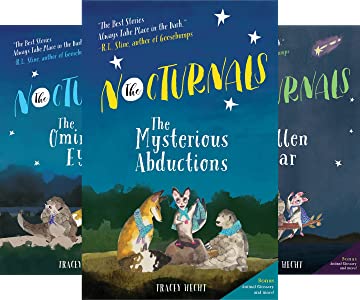
Buy it: The Nocturnals series on Amazon
10. Peter & Ernesto series by Graham Annable
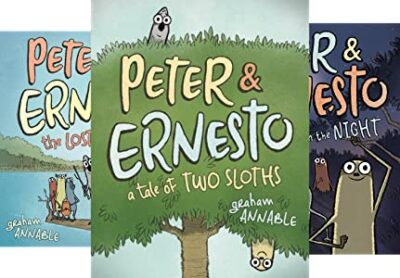
Buy it: Peter & Ernesto series on Amazon
Which critters are on your nocturnal animals list of favorites to share with kids? Let us know in the comments!
Looking for more great lists? Subscribe to our newsletters to receive notifications when we post new ones!
